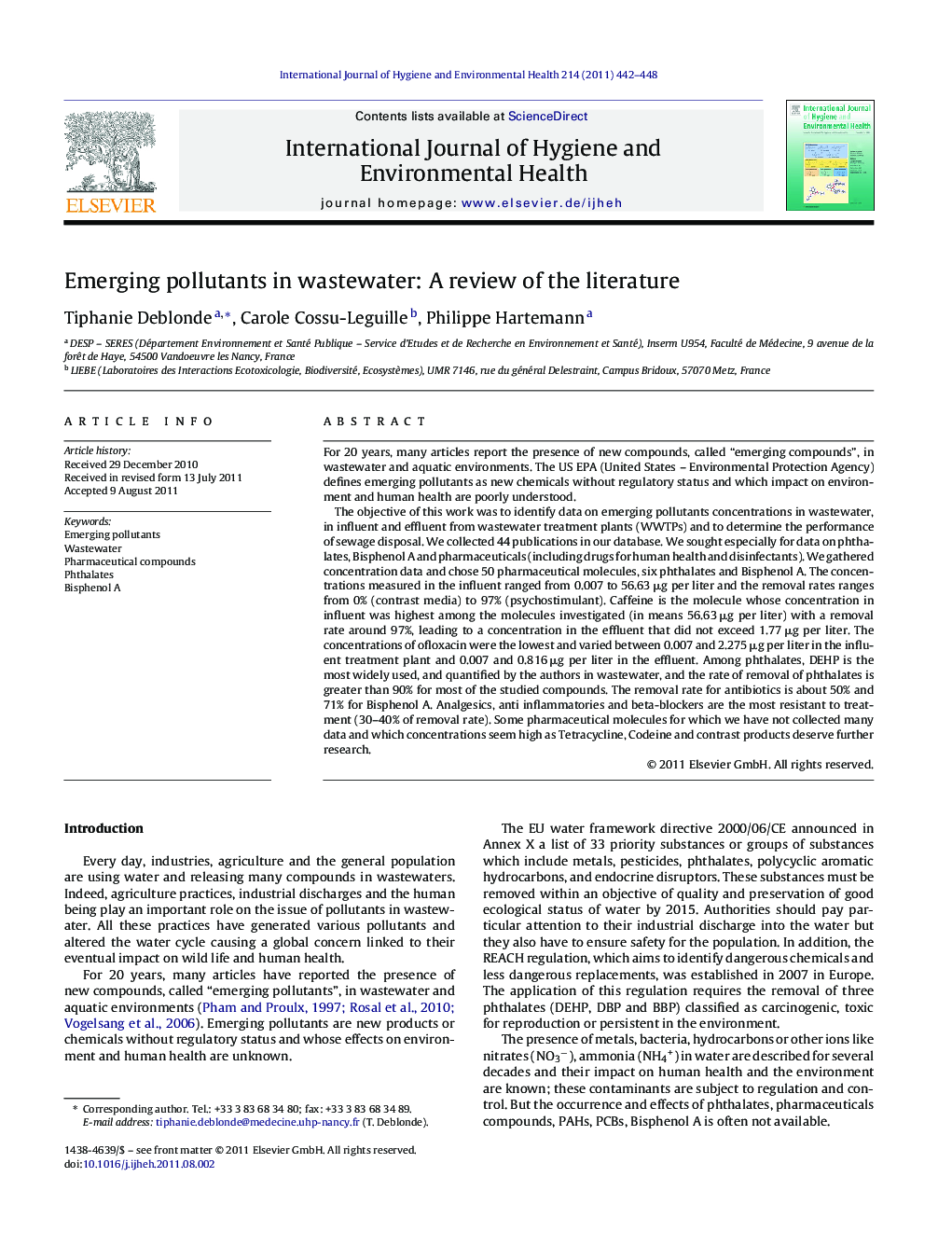| کد مقاله | کد نشریه | سال انتشار | مقاله انگلیسی | نسخه تمام متن |
|---|---|---|---|---|
| 2588696 | 1561912 | 2011 | 7 صفحه PDF | دانلود رایگان |

For 20 years, many articles report the presence of new compounds, called “emerging compounds”, in wastewater and aquatic environments. The US EPA (United States – Environmental Protection Agency) defines emerging pollutants as new chemicals without regulatory status and which impact on environment and human health are poorly understood.The objective of this work was to identify data on emerging pollutants concentrations in wastewater, in influent and effluent from wastewater treatment plants (WWTPs) and to determine the performance of sewage disposal. We collected 44 publications in our database. We sought especially for data on phthalates, Bisphenol A and pharmaceuticals (including drugs for human health and disinfectants). We gathered concentration data and chose 50 pharmaceutical molecules, six phthalates and Bisphenol A. The concentrations measured in the influent ranged from 0.007 to 56.63 μg per liter and the removal rates ranges from 0% (contrast media) to 97% (psychostimulant). Caffeine is the molecule whose concentration in influent was highest among the molecules investigated (in means 56.63 μg per liter) with a removal rate around 97%, leading to a concentration in the effluent that did not exceed 1.77 μg per liter. The concentrations of ofloxacin were the lowest and varied between 0.007 and 2.275 μg per liter in the influent treatment plant and 0.007 and 0.816 μg per liter in the effluent. Among phthalates, DEHP is the most widely used, and quantified by the authors in wastewater, and the rate of removal of phthalates is greater than 90% for most of the studied compounds. The removal rate for antibiotics is about 50% and 71% for Bisphenol A. Analgesics, anti inflammatories and beta-blockers are the most resistant to treatment (30–40% of removal rate). Some pharmaceutical molecules for which we have not collected many data and which concentrations seem high as Tetracycline, Codeine and contrast products deserve further research.
Journal: International Journal of Hygiene and Environmental Health - Volume 214, Issue 6, November 2011, Pages 442–448